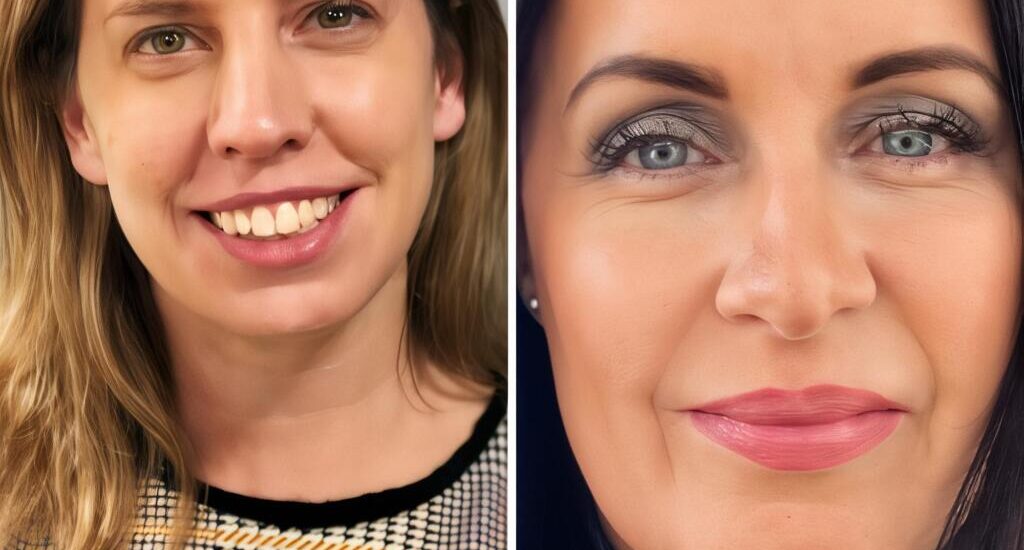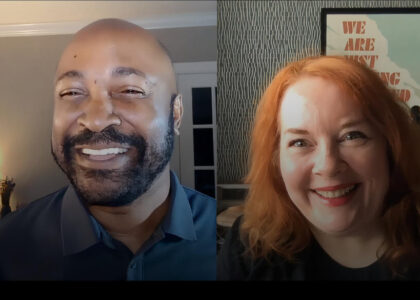


Our industry is increasingly defined by the intersection of art and science. Few individuals sit more comfortably at this crossroads than The Queens of Media Data—Jo Redfern and Emily Horgan.
Redfern, a media consultant with a sharp focus on audience engagement, and Horgan, a data specialist with an eye for streaming and kids’ content, have carved out unique niches in a world where content must not only entertain but strategically captivate. In this candid interview, we discuss the delicate balance of creativity and data-driven decision-making, offering rare insights into the ever-evolving landscape of media.
Jeff Rivera: What is your official title, besides The Queens of Media Data?
Jo Redfern: I’m a media consultant, currently focusing on engagement strategy for sports companies, teams, and organizations. Most of my career has been in kids’ media, and I’ve spent years trying to figure out how young people engage with content. It all started with the Bratz franchise in the early 2000s when the dolls were huge. I remember thinking, “Why is this brand so compelling?” That question has driven me ever since—understanding why kids engage and what keeps them coming back. Data plays a big part in that, showing us not just what and where they’re watching and playing, but why and how we can serve them better on those platforms.
Emily Horgan: I’m also an independent media consultant, and I specialize in helping clients make data-backed decisions about their IP, particularly in kids and streaming. I was into streaming long before it was cool, and I’ve spent over a decade analyzing thumbnails, data, and audience engagement. Basically, I help people grow franchises by understanding the numbers behind how kids and families engage with content. It’s not just watching cartoons, though—it’s also a lot of Excel spreadsheets!
So, a lot of our audience here are creatives—filmmakers, animators, novelists. Why is data so important for them, and how can it help them make better decisions?
Emily Horgan: Data is crucial because it provides context. At Disney, we had a research team that could give us reports, but when I left, I had to rely on publicly available metrics. Streaming has evolved into different phases of data disclosure—from nuggets of information like “number one this year, in this time slot for the five-to-eight demo” to Netflix releasing global top tens based on hours viewed. Now, we’re in a phase where there’s more insight than ever into what’s trending, which platforms are doing well, and most importantly, what’s actually working for your IP. Creatives need to use this data to understand if what they’re making aligns with their goals, whether that’s building a franchise or hitting certain engagement metrics.
Jo Redfern: And for those just starting out, data can help identify white space. If you’re a writer or a small creator, understanding where your potential audience is can show where to focus your energy. Maybe you have a successful book, and you want to adapt it to another medium. Before diving in, look at where your readers spend their time—whether on YouTube, gaming platforms, or other spaces—and let data inform where you take that next step.
So, if I’m thinking of creating an animation for ages 7 to 10, where should I start? What platforms and genres are prime for this demographic?
Jo Redfern: First, you have to think platform-specific. For that age group, Roblox is massive. You need to see what’s popular, get in and play those experiences yourself, and study how kids are interacting with characters and storylines. Platforms like Romonitor track Roblox data – things like how many visits an experience has, how long kids are staying engaged – and those insights can help to inform your creative decisions.
Emily Horgan: I’d add that understanding why kids are hooked is key. Some experiences might have deep lore and world-building that can easily translate to animation. Look at what genres are performing well, whether it’s adventure, fantasy, or something niche. Getting a sense of those patterns helps you craft something that’s not only creative but also in tune with what your audience already loves.
For someone creating narrative-driven content for boys aged 10 to 14, would you say it’s a bad idea to overlook gaming in favor of something more story-focused?
Jo Redfern: You’d be missing a huge opportunity if you skipped gaming. Even games can have strong narratives. Roblox has worlds with rich storytelling. You don’t need to abandon narrative for gameplay—they can coexist quite comfortably. But if you want to reach those boys, you have to recognize gaming’s influence in their life and incorporate it into your strategy.
What has changed in media in the last six months, based on the data and research you’ve done? Has anything surprised you?
Emily Horgan: I think big trends don’t necessarily change that quickly, but they do solidify. We’ve all known for a while about the globalization of content, but what surprised me recently is how pronounced that has become, especially in kids’ content. YouTube has really been at the forefront of this, but now we’re seeing it on platforms like Netflix, where global content is being picked up and exploded into worldwide hits. That level of globalization has definitely solidified more in the last few months, and it’s fascinating to watch the data confirm what we’ve suspected for a while.
Jo, what white spaces or underserved areas do you see in the media today, particularly for kids and young people?
Jo Redfern: In the world of sport, kids are massively underserved, especially on platforms like YouTube. The problem is monetization—it’s hard for sports companies to figure out how to make money from young audiences on these platforms. So, they’ve kicked that can down the road in lieu of trying to eke out broadcast revenues. However, now they’re realizing they’re missing out on resonating with younger viewers, and it’s fast becoming a crisis. Younger generations are, for example, tending to follow athletes first, not clubs or teams. They’ve built relationships with influencers like Logan Paul or Mr.Beast in the last 10 years on YouTube and Twitch, and those personalities are taking a great share of media time, and eating the lunch of traditional sports amongst younger audiences.
Who is your ideal client and how do you work with them?
Emily Horgan: My ideal client is anyone who’s curious, someone who wants to roll up their sleeves and dig into data. Whether it’s a small production company or a corporate client, my goal is to help them understand their audience and make data-driven decisions that can scale. I make the information digestible, even throwing in memes when I can to keep it light, but ultimately, the goal is to turn raw data into actionable insights.
Jo Redfern: Same here—curiosity is key. My favorite clients are the ones eager to explore new platforms, to really take the time to get to know young people, especially when it comes to the wild, messy world of Roblox. It’s a puzzle, figuring out how to meet audiences where they are: why are they there, how does it deliver against need for them, how long do they stay, what do they want to see, do and play there? There are a myriad of factors, but that’s what makes trying to work it out so exciting!




